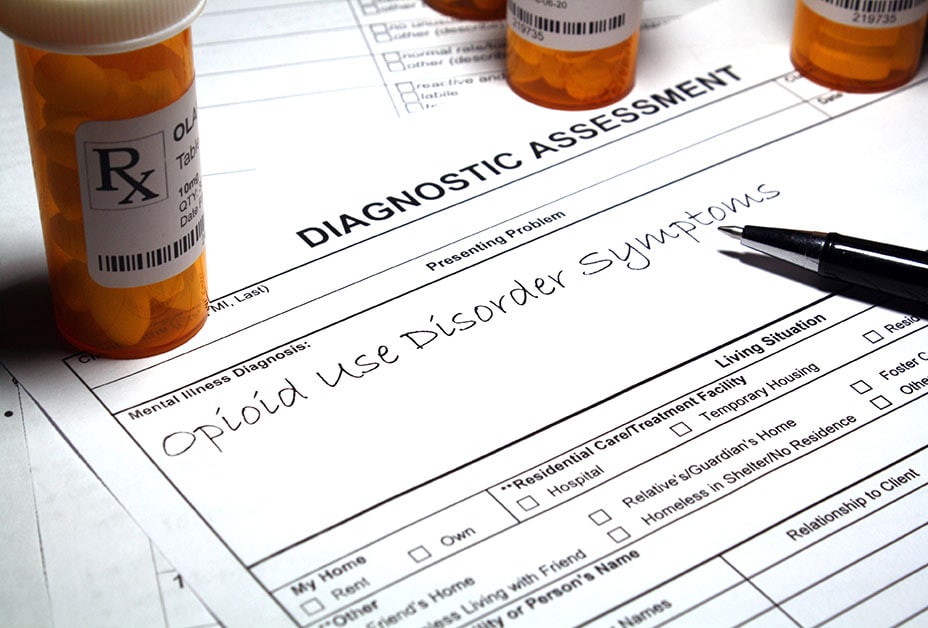Opioid Use Disorder
[ow-pee-oyd] [yooz] [dis-or-dr]

Opioids are a class of drugs, that interacts with opioid receptors on nerve cells in the body and brain, and reduce the intensity of pain signals and feelings of pain. This class of drugs includes the illegal drug heroin; synthetic opioids such as fentanyl, which is often made illegally; and pain medications available legally by prescription, such as oxycodone, hydrocodone, codeine, and morphine.
Opioid Use Disorder (OUD), a substance use disorder, is a problematic pattern of opioid use that causes significant impairment or distress. OUD is a treatable, chronic disease that can affect anyone – regardless of race, gender, income level, or social class. A diagnosis of OUD is based on specific criteria such as unsuccessful efforts to cut down or control use or use resulting in a failure to fulfill obligations at work, school, or home, among other criteria. It can even lead to overdose and death. In 2020, an estimated 2.7 million people ages 12 or older reported having an OUD.
Key Facts
- Millions of people in the U.S. are living with opioid use disorder (OUD).
- Opioid use disorder (OUD) occurs when opioid use causes significant impairment and distress.
- A diagnosis of OUD is based on specific criteria such as unsuccessful efforts to cut down or control use or use resulting in a failure to fulfill obligations at work, school, or home, among other criteria.
- About 2.7 million people in the United States report suffering from OUD.
- Overdoses are a leading injury-related cause of death in the United States and appear to have accelerated during the COVID-19 pandemic.
- OUD is a medical condition that can affect anyone – regardless of race, gender, income level, or social class.
- Common treatment options for OUD include medications for opioid use disorder (MOUD) (including methadone, buprenorphine, naltrexone).
Media

Beginning in the 1990s, there was a dramatic increase in the use of prescription opioids for the treatment of chronic, non-cancer pain, such as back pain, despite serious risks and the lack of evidence about their long-term effectiveness.
Prevention Tips
- Know the signs of an opioid overdose. Recognizing the signs can save a life. Teach your family members and friends how to respond to an overdose. Learn how and when to use naloxone, a life-saving medication that can reverse an opioid overdose.
- Know your options. Talk to your doctor about ways to manage your pain that do not involve prescription opioids and create a pain management plan.
- Take and store opioids properly. Never take prescription opioids in greater amounts or more often than prescribed.
- Avoid taking opioids with alcohol, other substances or medications (e.g., sleeping pills, benzodiazepines, or muscle relaxants), or any illicit drugs.
- Treat opioid use disorder by accessing substance use disorder treatment services, including Medications for Opioid Use Disorder (MOUD).

